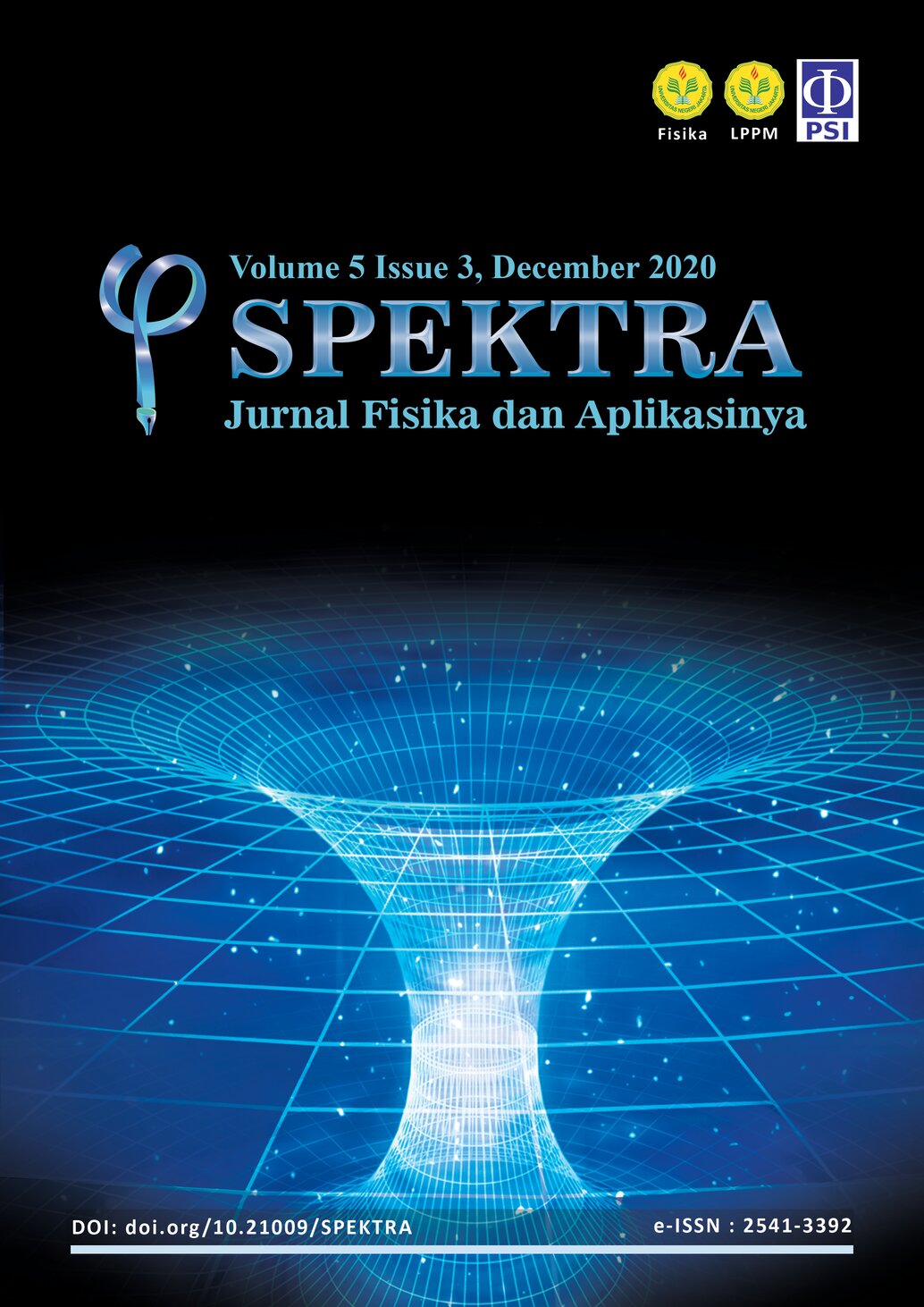DESIGN OF NEUTRONIC PARAMETERS OF MTR REACTOR USING WIMSD-5B/BATAN-FUEL CODES
DOI:
https://doi.org/10.21009/SPEKTRA.053.08Keywords:
thermal neutron flux, a research reactor, U7Mo/Al fuel, WIMSD-5B, Batan-FUELAbstract
BATAN has three aging research reactors, so it is necessary to design a new, more modern MTR type reactor using high-density, low enrichment uranium molybdenum fuel. The thermal neutron flux at the irradiation position is an important concern in the design of research reactors. This analysis is performed using standard computer codes WIMSD-5B and Batan-FUEL. The purpose of this study is to analyze the effect of the core configuration with safety control rods and neutronic parameters using the diffusion method calculation. The reactor core consists of 16 fuel elements and four control rods placed in the 5 x 5 position of the grid plate and is loaded the reflector elements outside the core. The cycle length is also a concern, not less than 20 days, and the reactor can be operated safely with a power of 50 MW. The calculation results show that for the highest fuel loading, which is 450 grams of U7Mo/Al fuel with D2O as a reflector, it will provide the lowest thermal neutron flux at the center of the core irradiation position, namely 1.0 x1015 n/cm2s. The core fuel cycle length will be up to 39 days, meeting the expected acceptance and safety criteria.
References
[2] S. Tukiran et al, “Neutronic Conceptual Design of the Innovative Research Reactor Core Using Uranium Molibdenum Fuel,” TDM, vol. 3, no. 14, pp. 178-191, 2012.
[3] L. Suparlina dan T. Surbakti, “Analisis Pola Manajemen Bahan Bakar Teras Reaktor Riset Tipe MTR,” TDM, vol. 2, no. 16, pp. 89-99, 2014.
[4] I. Kunturo and T. M. Sembiring, “Alternative Core Design for the Innovative Research Reactor (RRI) from Neutronics Aspects,” TDM, vol. 1, no. 16, pp. 1-10, 2014.
[5] T. Surbakti et al., “Priliminary Study for Alternative Conceptual Core Design of the MTR Research Reactor,” J. Phys. Conf. Ser. 962012032, pp. 1-11, 2018.
[6] S. Tukiran and T. M. Sembiring, “Neutronics Analysis on Mini Test Fuel in the RSG-GAS Core,” TDM, vol. 1, no. 18, pp. 29-40, 2016.
[7] S. Pinem et al., “Fuel element burn-up measurements for the equilibrium LEU silicide RSG-GAS (MPR-30) core under a new fuel management strategy,” Ann. of Nucl. Energy, vol. 98, pp. 211-217, 2018.
[8] G. Wei et al., “Design of the testing set-up for a nuclear fuel rod by neutron radiography at CARR,” Phys. Proc, vol. 43, pp. 307-313, 2013.
[9] J. S. Yim et al., “On-going Status of KJRR Fuel (U7Mo) Qualification,” RRFM, INL/Con-17-41243, 2017.
[10] K. Raheleh, “Sensitivity Analyses of the Use of Different Neutron Absorbers on the Main Safety Core Parameters in MTR Type Research Reactor,” Nucl. Eng. Technology, vol. 4, no. 46, pp. 513-520, 2014.
[11] D. L. Smith, “Evaluated Nuclear Data Covariances: The Journey From ENDF/B-VII.0 to ENDF/B-VII.1,” Nucl. Data Sheets, vol. 12, no. 112, pp. 3037-3053, 2011.
[12] S. Pinem et al., “Core conversion design study of TRIGA Mark 2000 Bandung using MTR plate-type fuel element,” Int. J. of Nucl. En. Sci. and Technology, vol. 3, no. 12, pp. 222-238, 2018.
[13] T. Surbakti et al., “Sensitivity of Reflector on Neutronic Parameter for Conversion Core Design of TRIGA Research Reactor,” J. Phys.:Conf. Ser. 119802205, pp. 1-10, 2019.
[14] T. Surbakti et al., “Calculation of Control Rods Reactivity Worth of RSG-GAS First Core Using Deterministic and Monte Carlo Methods,” J. AI, vol. 2, no. 45, pp. 69-79, 2019.
[15] T. Surbakti and M. Imron, “Fuel burn-up calculation for working core of the RSG-GAS research reactor at Batan Serpong,” JPFA, vol. 2, no. 7, pp. 89-101, 2017.
[16] T. Surbakti and Purwadi, “Karakteristik Reaktivitas Teras Kerja RSG-GAS Selama 30 Tahun Beroperasi,” JPFA, vol. 1, no. 7, pp. 13-26 , 2017.
[17] S. Pinem et al., “Safety Analysis of the TRIGA 2000 U3Si2-Al Fuel Core Under Reactivity In sertion Accidents,” J. AI, vol. 1, no. 46, pp. 33-39, 2020.
[18] P.H. Liem et al., ”Kinetics parameters evaluation on the first core of the RSG GAS (MPR-30) using continuous energy Monte Carlo method.” Prog. in Nucl. Energy, vol. 109, pp. 196-203, 2018.
[19] T. Surbakti et al., “Dynamic Analysis on the Safety Criteria of the Conceptual Core Design in MTR-type Research Reactor,” J. AI, vol. 2, no. 44, pp. 89-98, 2018.
Downloads
Published
How to Cite
Issue
Section
License
SPEKTRA: Jurnal Fisika dan Aplikasinya allow the author(s) to hold the copyright without restrictions and allow the author(s) to retain publishing rights without restrictions. SPEKTRA: Jurnal Fisika dan Aplikasinya CC-BY or an equivalent license as the optimal license for the publication, distribution, use, and reuse of scholarly work. In developing strategy and setting priorities, SPEKTRA: Jurnal Fisika dan Aplikasinya recognize that free access is better than priced access, libre access is better than free access, and libre under CC-BY or the equivalent is better than libre under more restrictive open licenses. We should achieve what we can when we can. We should not delay achieving free in order to achieve libre, and we should not stop with free when we can achieve libre.
 SPEKTRA: Jurnal Fisika dan Aplikasinya is licensed under a Creative Commons Attribution 4.0 International License.
SPEKTRA: Jurnal Fisika dan Aplikasinya is licensed under a Creative Commons Attribution 4.0 International License.
You are free to:
Share - copy and redistribute the material in any medium or format
Adapt - remix, transform, and build upon the material for any purpose, even commercially.
The licensor cannot revoke these freedoms as long as you follow the license terms.









